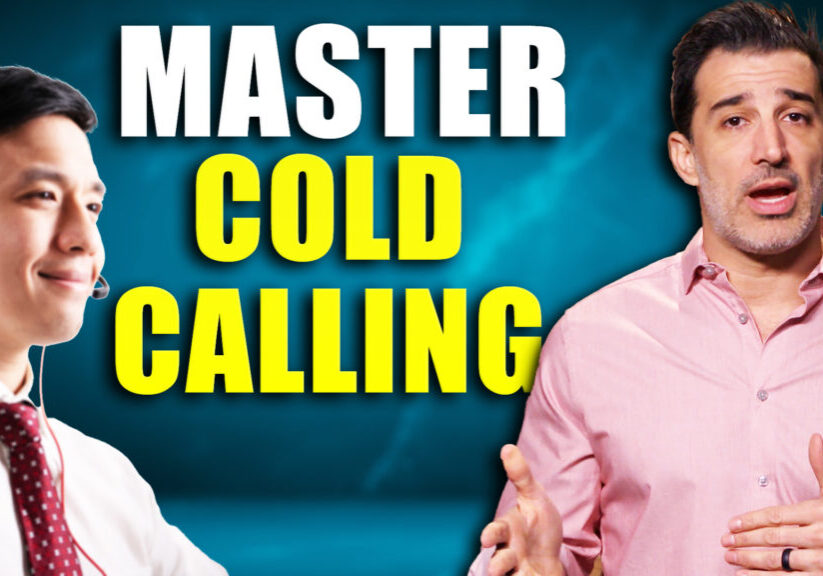 Most salespeople have a pretty informal process to prospecting. It generally consists of sending out some emails and making some phone calls, and these rarely get through to the intended recipient. And when salespeople actually do get through, they’re usually not fully prepared with exactly what to say to that prospect and how to ultimately attempt to turn that conversation into a sale.
Most salespeople have a pretty informal process to prospecting. It generally consists of sending out some emails and making some phone calls, and these rarely get through to the intended recipient. And when salespeople actually do get through, they’re usually not fully prepared with exactly what to say to that prospect and how to ultimately attempt to turn that conversation into a sale.
Three simple but cutting-edge steps to prospecting that will significantly increase the conversion ratio of prospecting attempts:
#1. Script out calls and practice. I am going to go out on a limb and guess that when you make a cold call to a prospect, you’re not working off of a script. If this is true then you’re in the same boat as 90% of salespeople. Most salespeople wing their cold call approach. This will lead to going all over the place during a call—digressing and ranting; this will ultimately reduce the likelihood of converting that call into an appointment.
Instead, script out exactly what you intend to say in your call and rehearse that script. The reason that practice is so important is that you obviously don’t want to sound scripted. But the most effective people, when making a prospecting call of any sort—whether it’s a cold call, referral call or a follow-up—use the same exact script over and over but don’t sound scripted due to practice sessions.
#2. Create a campaign. Instead of haphazardly calling on prospects, you should lay out a specific series of mailers, emails, phone calls and voicemails that you intend to follow up on for everyone you contact. This starts with making the initial call and sending that first letter, to following up on that letter with a call and an email, and then sending them a package that will stand out from any other packages that your competitors may have sent them. Then follow up on that package with another call, and so on. This is a well-thought-out campaign, not a menagerie of random contacts.
#3. Attempt to contact at different times of the day. Most salespeople make the majority of their calls between 9:30 am and 11:30 am. The other obvious window would be from 1:30 pm to about 4:30 pm. The problem is that you’re not the only one making calls during these periods. This is when EVERYONE makes their calls.
Rather than call during the times that your competitors are, make calls at different times of the day, such as at 8:00 am and at 6 pm. Also call on a Saturday. Realize that high level, C-level management types are probably in the office before 8 am and still there after 6 pm. By reaching them when fewer salespeople are, you’re more likely to ultimately connect and get more traction out of your prospecting attempts.
Follow these three simple but very effective steps to cutting-edge prospecting and you will soon see a dramatic rise in not only the number of times you actually reach the prospect, but as a byproduct of that, the number of sales you close.
Which of these tips was most helpful to you? Please share below in the comments.
Marc Wayshak is a Motivational Sales Speaker, a Sales Keynote Speaker
and a Sales Management Speaker
Enjoyed this article? Please share away!

Get instant access to our free sales training:
Why Prospects Push Back on Price, Give 'Think-It-Overs,' and Ghost in Sales Until They Meet a Sales Superstar Who Is Following These 7 Simple Keys

About the Author Marc Wayshak
Marc is is the best-selling author of three books on sales and leadership, including the highly acclaimed titles Game Plan Selling, The High-Velocity Sales Organization and his forthcoming book, Sales Conversations, Mastered.
Marc is a contributor to Inc, HubSpot, Fast Company, Entrepreneur Magazine, and Huffington Post Business. He also hosts a popular YouTube channel on sales strategy with over 103,000 subscribers.
Marc helps thousands of people his data-driven, science-based approach to selling that utilizes all the best tools available to sales organizations today.




![How-to Sell to Power [C-Suite Sales Must-Knows!] How to Sell to Power [C-Suite Sales Must-Knows!]](https://salesinsightslab.com/wp-content/uploads/bb-plugin/cache/How-to-Sell-to-Power-C-Suite-Sales-Must-Knows-1024x576-landscape-7a52c541b28a7b772ad9e1010d8240be-.jpg)


![The Absolute Best Way to Start a Sales Conversation [WITH ANY PROSPECT] The Absolute Best Way to Start a Sales Conversation [WITH ANY PROSPECT]](https://salesinsightslab.com/wp-content/uploads/bb-plugin/cache/The-Absolute-Best-Way-to-Start-a-Sales-Conversation-WITH-ANY-PROSPECT-1024x576-landscape-be9d9379ab94d9f71b5bfeed42246a84-.jpg)